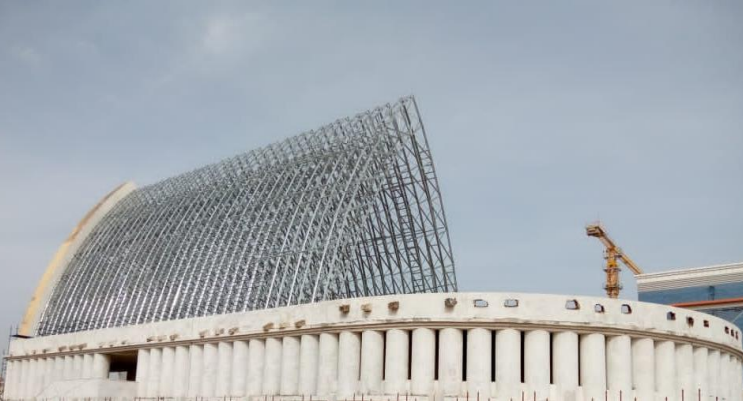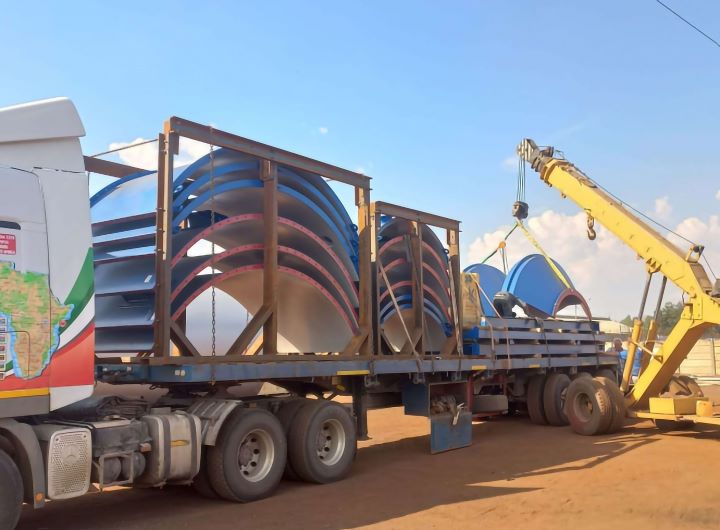
… continued from Part 1.
Celebrating project management excellence
Gebremeskel notes that the Our Lady of Peace Cathedral not only had a troubled history, but that its restoration was executed under particularly difficult circumstances.
Logistics was the major challenge. The town of N’Djamena is 1 000km away from the nearest port. All the components were shipped via Spain to Cameroon, after which the project team had to contend with extremely poor roads to reach their final destination.
“Chad is not only a landlocked country, but is also a region where there has unfortunately been a lot of conflict for a long time, which meant that getting the materials safety to site was not an easy task. As the parts were premanufactured and only assembled on site, there could be no errors in measurements when it came to the components transported from South Africa. Then, an excellent installation and erection team was also required. This is really about top-notch project management and the logistical capability of our steel sector,” Gebremeskel points out.
Steel is ideal for Africa
MiTek Technical Director Mike Newham points out that in a location such as this, Ultra-Span trusses ensured longevity and durability due to their galvanised coating and resistance to borer, vermin and fungus.
Benefits of the use of steel in this application included cost-savings on shipping and transportation due to the lightweight nature of the product, streamlined on-site installation and fabrication processes, reduced waste – and the commitment to environmental sustainability by ensuring 100% recyclability of this steel roof at the end of its life.
Further demonstrating that steel is the building material of the future in Africa, MiTek is most proud of how it employed innovative design and technology to address the structural complexities and logistical demands of this project. The company successfully leveraged its Ultra-Span product’s exceptional capabilities to ensure this innovative project excelled beyond conventional parameters – not only locally, but also in the heart of Africa.
A new era for steel across Africa
Gebremeskel believes that the Our Lady of Peace Cathedral project also signals a new era in the use of light steel frame throughout Africa. Whereas there was a time when lower quality steel was used across the continent, the complete opposite now applies.
“What we are now finding is that the more remote and challenging the site, good quality steel is the best solution. The project team could have tried many other materials, but these were just not viable. This proves that steel – and, in this case, light gauge steel – is the ideal solution in environments such as this. We are definitely entering an era when there will be many projects with similar applications for light steel frame across the continent,” he concludes.
About the South African Institute of Steel Construction (SAISC)
Founded in 1956, the South African Institute of Steel Construction (SAISC) represents all facets of the steel construction industry – as well as those with an interest in the use of steel in all sectors of business and society as a whole. The mission of the SAISC is also to promote the holistic vigour and prosperity of the people and companies in South Africa that provide steel-related products or services to the construction and related industries.
SAISC members include the steel mills, merchants and value-added processors and service centres, steelwork contractors, companies that provide services (such as fabrication, galvanising or painting); or products such as fasteners, paint and a variety of other products, client bodies, architects, specifiers, consulting engineers, project managers, quantity surveyors, engineering procurement and contract management contractors and assorted others.
More news
- CELEBRATING EXCELLENCE IN THE RESIDENTIAL PROPERTY SECTOR
- PART 4: GIBS PANEL DISCUSSES INTEMEDIATE CITIES ROLE IN AFRICA’S DEVELOPMENT
- EXPOSED AGGREGATE PAVERS COMPLEMENT NEW LIFESTYLE CENTRE
- GIBS PANEL EXPLORES ROLE OF INTERMEDIATE CITIES IN SA’S DEVELOPMENT PART 3
- CITI-CON’S CONCRETE KNOWLEDGE SUCCESSFULLY DEPLOYED ON NEW LANDMARK DEVELOPMENT





